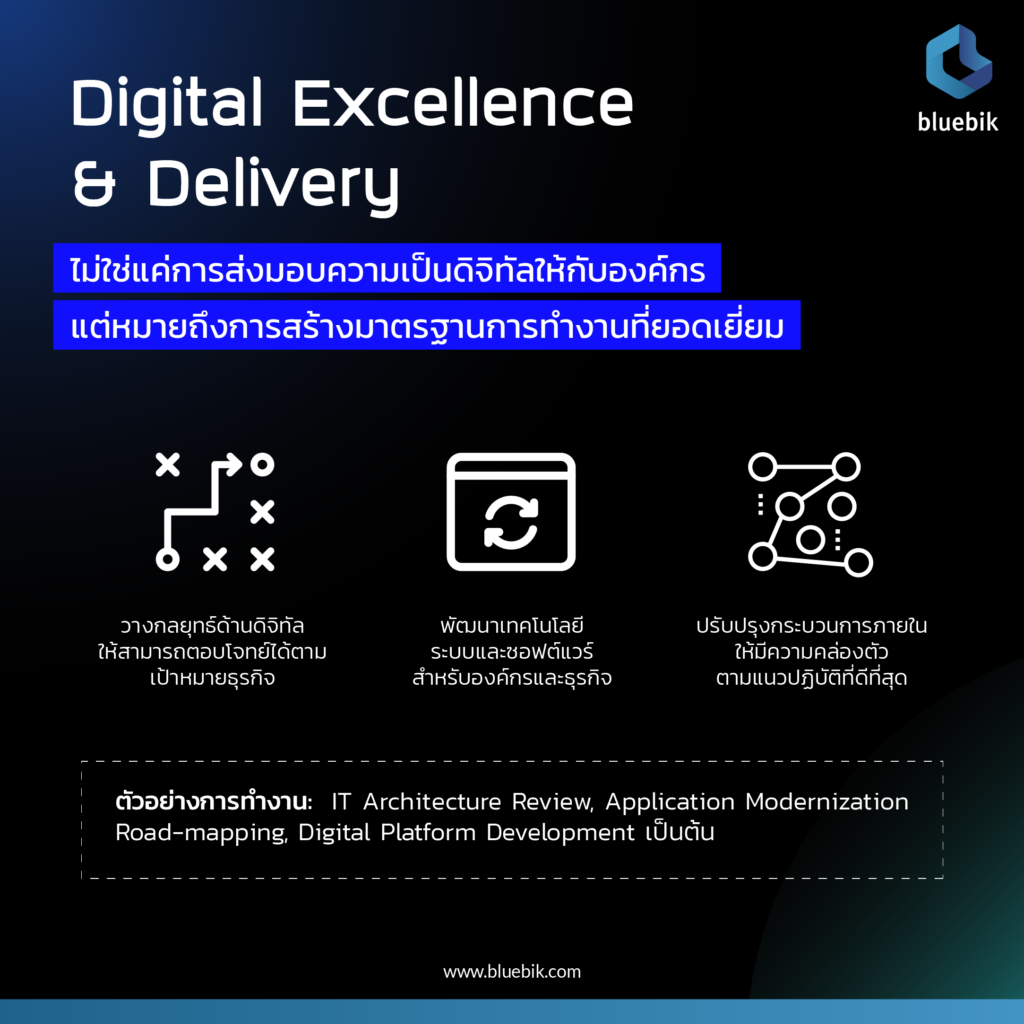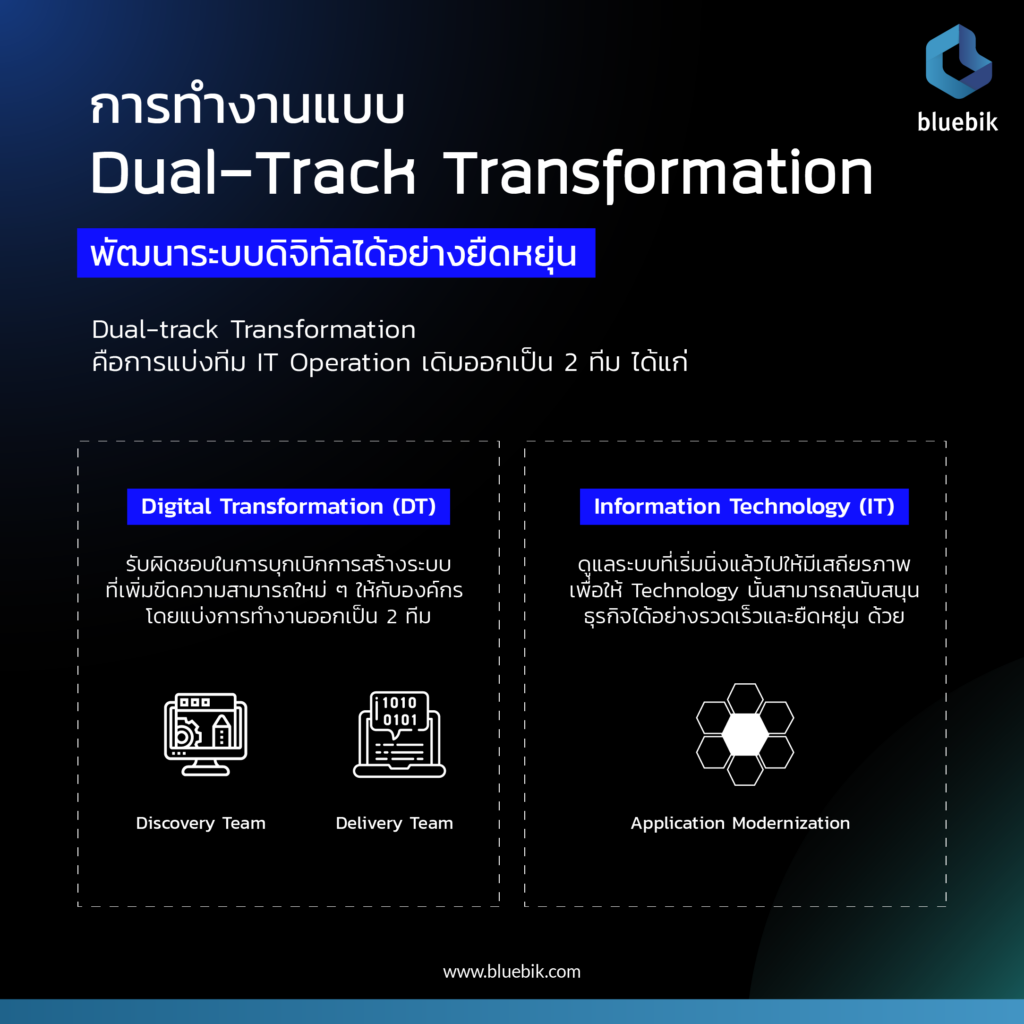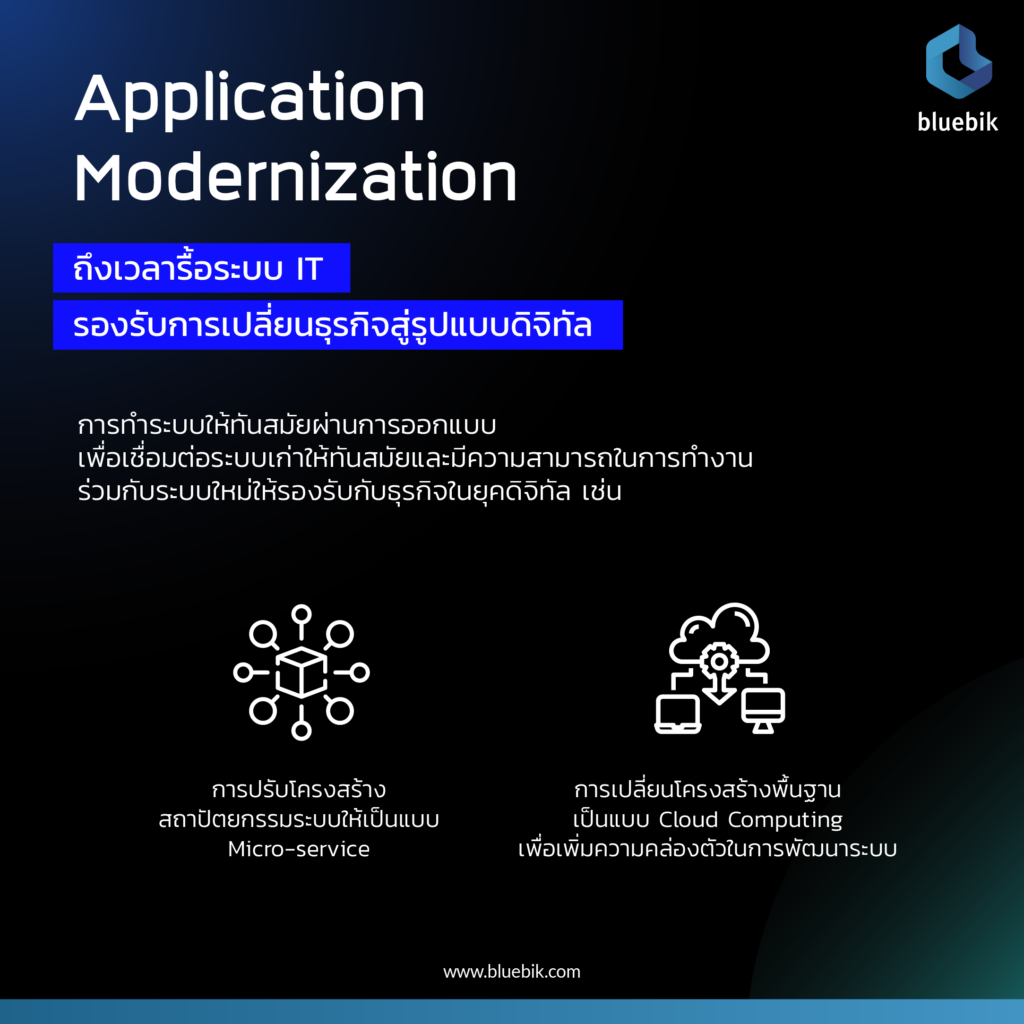Many organizations try end-to-end digital transformation but not all of them can successfully apply technologies to serve their needs. Randomly selected technologies cannot guarantee successful digital transformation.
Pakorn Jiemskultip, Chief Technology Officer of Bluebik Group Public Company Limited, shares his views on end-to-end “Digital Excellence & Delivery” services which cover in-depth digital advice, the technologies that organizations need, proper architecture for organizations, software development and the agility of technology-related departments which can unlock the technological potential of organizations and ensure their sustainable leadership in their respective markets.

Digital Excellence & Delivery means not only to make organizations digital but also to develop the exceptional standards of their operations.
Although the executives who want digital transformation have a great vision, they may still face serious problems if their organizations and personnel are not ready for a change. The Digital Excellence & Delivery team provides comprehensive solutions which cover the digital strategies that fulfill business objectives, the development of technological application, systems and software, and the improvement of internal systems to make them agile and reflect the best practices in their respective industries. This is to offer perfect digital experiences to clients and users. Digital Excellence & Delivery services are aimed at enabling organizations to develop and operate information systems to serve digital business. They include IT architecture review, application modernization road-mapping and digital platform development.

Dual-track methodology lets organizations develop their digital systems with flexibility
The tide of digital transformation prompts many organizations to develop new systems to support changing business models. However, IT teams may be overburdened because they must maintain their old systems and simultaneously speed up the development of new systems. Under such a circumstance, organizations may lose their competitive edge because they cannot catch up with their competitors. Thus organizations choose dual-track transformation as a strategy for their successful digital transformation.
Dual-track transformation is the division of the IT Operation team into at least 2 teams. One is the Digital Transformation (DT) team which is capable of developing and managing digital channels and duty-bound to create the systems that elevate the capabilities of organizations. The other team is the Information Technology (IT) team which must do its best to maintain stabilized systems to ensure that the created technologies will continuously support business.

DT cannot apply all the conventional management and skills of the IT Operation team to develop and maintain new systems because it must create systems as soon as possible and the systems must be highly flexible and always ready for improvement. Therefore, world-class technology developers apply dual-track Agile product development or continuous discovery and delivery which is the Agile approach of product development. A digital product development team is divided into 2 teams – the Discovery Team and the Delivery Team. Both teams work in parallel with each other. Bluebik applies this methodology to its services for many clients. The approach allows it to deliver services quickly and efficiently and collaborate with the teams of its clients to raise the value of what will be delivered to users.
Everyone can really take part in creating suitable and right products by collaboratively finding solutions and designing and developing product prototypes to test the ideas or business models that were produced for the users who are deemed to be real clients.
Discovery Team
It is responsible mainly for collecting information about the new products and services that users need and analyzing development models, feasibilities and priorities for the Delivery Team. Basically, the Discovery Team includes a product manager, a UX/UI designer, a system analyst and a business analyst. They have different duties but share common goals – 1) to find out the new product ideas or qualifications which can be developed into a new service or business model and 2) to verify if the ideas have business value and are worth development and how they should be developed to guarantee the highest satisfaction of customers. The findings will be delivered to the system/product Delivery Team that will conduct development in order of priority. Normally the Discovery Team sets directions and plans solutions to business and operational problems through its design and trial process.
Delivery Team
The team consists of the developers who translate ideas into reality. Using the Agile development methodology, the Delivery Team divides its work into Sprints. The team first moves the tasks that the Discovery Team prepared in the Product backlogs to the Sprint backlog. Then the Delivery Team carries out the tasks in accordance with its Scrum Events. The key members of the Delivery Team include an engineer, a developer, a scrum master and a tester.
The dual-track work by the Discovery Team and the Delivery Team is flexible because their main duties are clearly divided. Besides, the Discovery Team can completely verify information with users before forwarding tasks to the Delivery Team for development. This allows the Delivery Team to deliver the most valuable outcomes for the benefits of business.
Application modernization – time to overhaul IT systems to support the digital transformation of business
Apart from the teams that develop new digital products or services under the DT team, the IT team must review the capacity of the Core system under its supervision to find out if the system can meet future business requirements. This is because technologies always and quickly change. If the IT team lets an old system cause a bottleneck without improving it, it can be too late to catch up with competitors because their core systems have more capacities. For example, conventional shops process transactions only during their opening hours. Now consumers expect their demand to be satisfied in a 24/7 manner. Therefore, systems must be able to meet demand quickly and accurately and handle increasing transactions. It is not easy for old and previously designed systems to fulfill the expectation.
To enable connection between a conventional Core system and the new systems of the DT team and business partners, the Core system should be modernized to be more efficient. This process is called “application modernization” meaning that new technologies and new designs are applied to modernize a Core system so that it can serve present business requirements. This is like the renovation of a whole house which covers more than repainting or new wallpapers. An old house may not be able to serve the present and future demand of family members. Application modernization includes the creation of microservice architecture or the replacement of infrastructures with cloud computing which will also increase flexibility in system development and maintenance.

Bluebik DX: the digital services that are greater than being “good enough” and are the “best” for clients.
Business organizations must undergo the complete reorganization which concerns technologies, processes and people to be ready for digital transformation and the digital systems that will guarantee their long-term success. Therefore, the Digital Excellence & Delivery team has heavily invested in technologies and personnel so that it can deliver the “best” things to clients. All members of the team have been well trained to see both overall business problems and complicated technical issues and solve them so that clients can maximize the use of digital technologies and compete effectively amid the rapidly changing business environment. Bluebik is one of a few consultancies with end-to-end digital transformation services covering business strategies and successful implementation. We would like to help increase the potential of governmental and private organizations in the country so that they can compete internationally.





